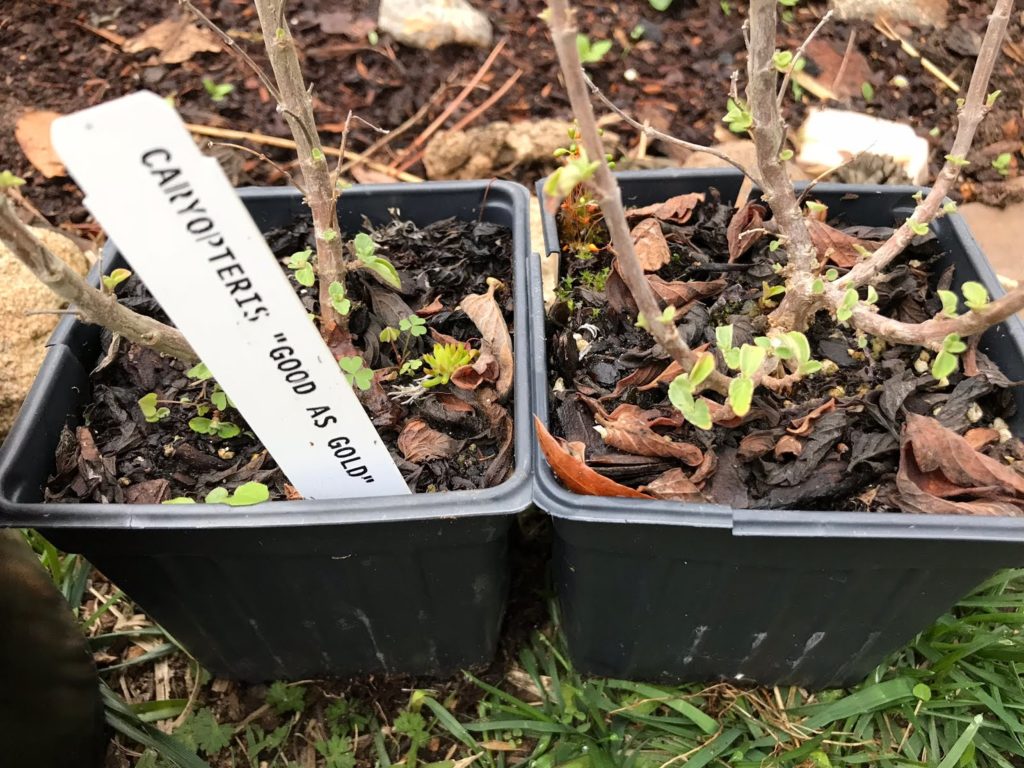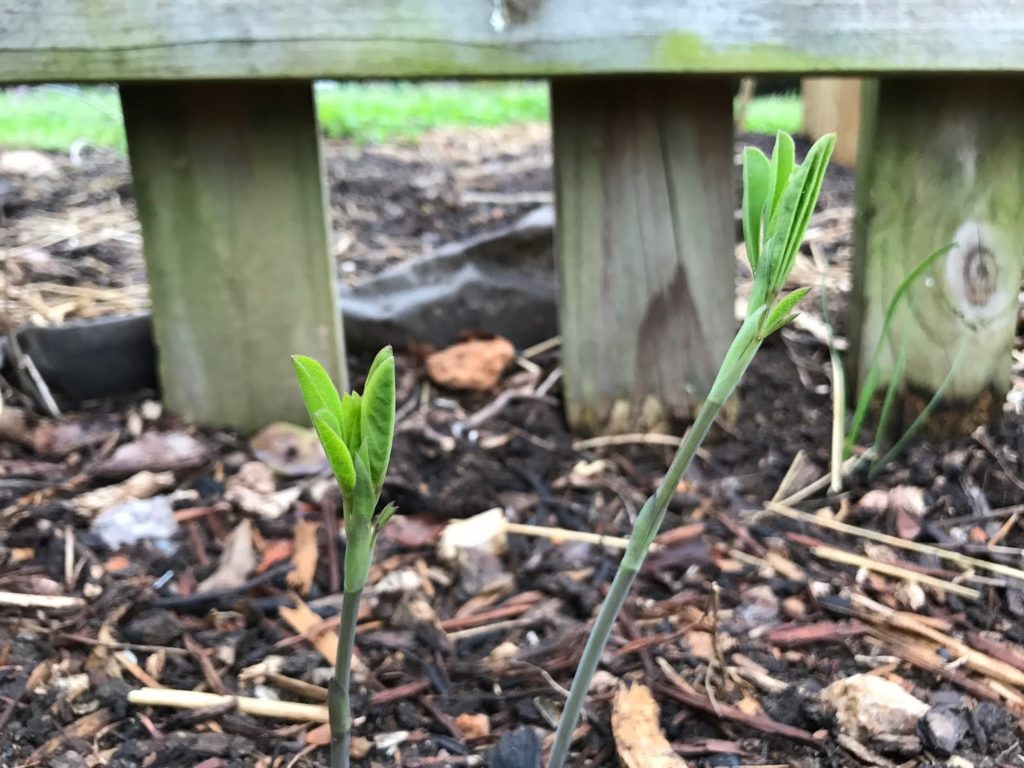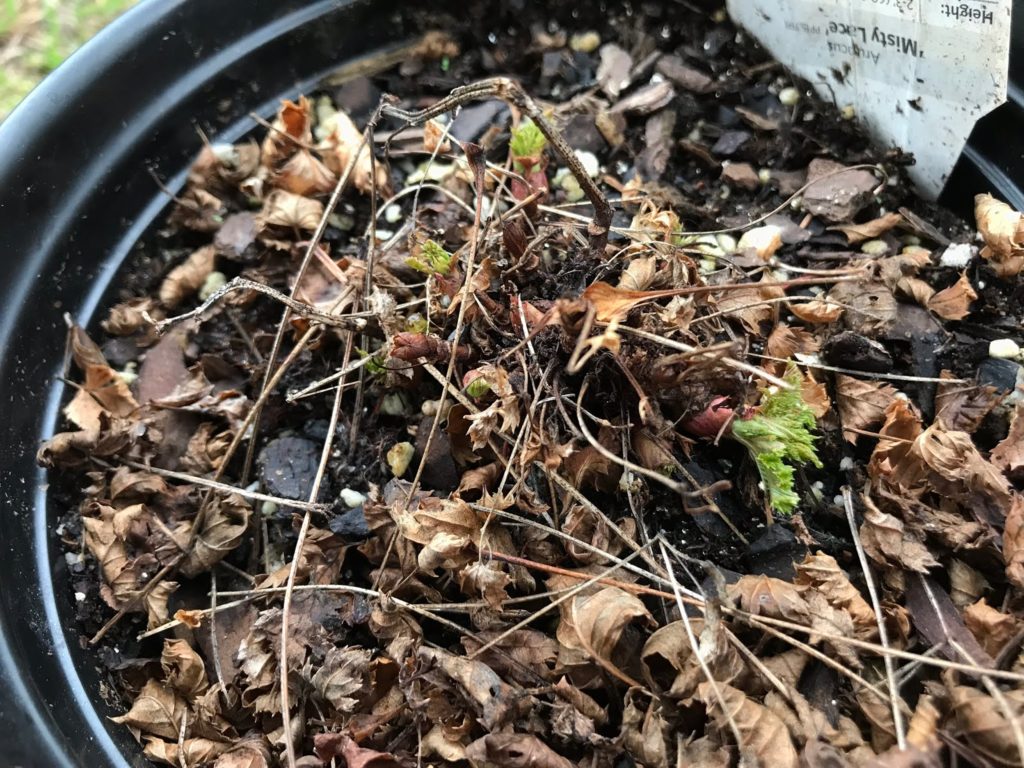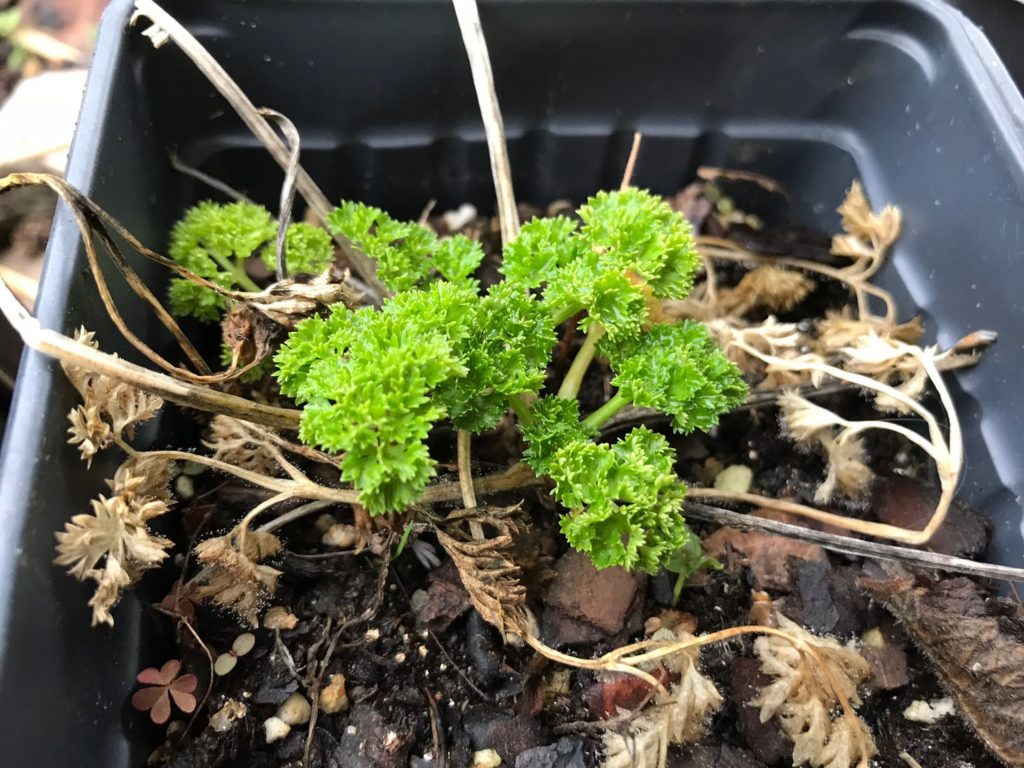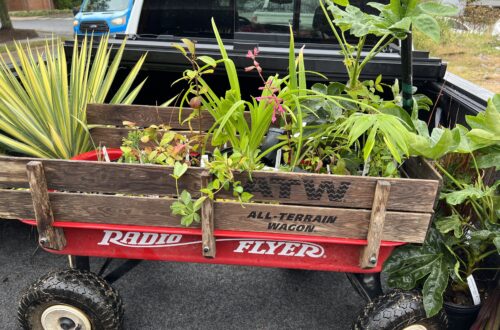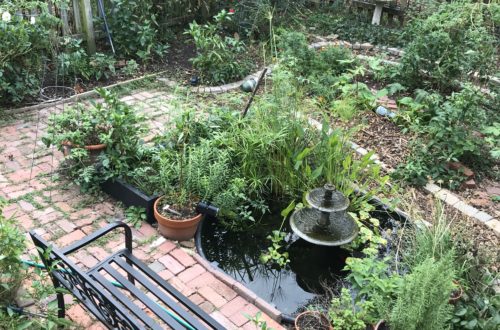Before the Last Frost (5 Weeks)
Garden Steals
If you are on a budget, the smaller potted perennials are your friends. The gallon pots of coneflowers make me swoon, but I’m likely only going to shell out a couple bucks for a pint size one. I suggest if you are new to gardening, you should get to know the local nurseries and get an idea of their prices and what sizes they offer. I was delighted to see that Logan’s ha started to offer smaller perennials for those of us who would love to expand our gardens but can’t afford the large gallon pots.
The timing of your visit matters. Don’t expect to get the best deals on the weekend. The garden centers are packed and the very best of the plants are out in their peak beauty. If you are willing to wait a couple days, some of the plants with spend flowers will have been moved to make way for n new stock arrivals. When the new plants arrive, those old ones have to go somewhere. Usually it is the sale tables or racks. For annuals, there isn’t much benefit to waiting unless the plant has a long bloom season. For perennials, waiting is no big deal. If you treat them right, they will come back the next year.
My Perennial Finds
The weather has me itching to plant, and after seeing shoots of a baptista I was sure had died last summer, I drove to Campbell Road Nursery for perennials and hoped to catch some sales. This was the same nursery where I had purchased that baptista late in the season. It never bloomed for me and eventually shriveled up and went dormant until now, which sometimes happens when you plant in the hottest part of the year. I’ve been shopping at Cambell Road since we lived in Cary, which was from 2004 – 2007. Regardless of the sales tables, they offer some of the best prices in the area. Their tagline is “no frills – just great plants”, and this is true. It reminds me of the pull-off the country road nurseries with the gravel road and wood cabin-like retail space.
When I walked down to the perennial section, I was disappointed that there wasn’t much green, but there was another customer stacking up her own plants on a pull cart and was quick to point out the good stuff. She told me several times to “Save the plants!” The old stock would be thrown out soon to make way for new plants, so everything was super cheap. She even gave me one of her cone flowers – I guess she felt a little bad for cleaning out that entire section or maybe was just being generous. Either way, I love coneflowers and was happy to get one. They had gallon and half-gallon pots marked down to 50 cents and flats for $5. I spent $18.50 and brought home dianthus, salvias, pycnanthemum, coneflower, irises, artemisia, caryopteris, verbena, aruncus and a few mysteries. No, I’m not familiar with all those names, and I had to look some of them up. If I’ve done my math correctly, I purchased 47 plants for under $20. They all had signs of life, so hopefully what is crunchy now will be beautiful later in the spring.
I spent the afternoon planting crispy perennials in the yard. I also dug up and split up an over crowded bed of hellebores, which I purchased from Campbell Road when we lived in Cary. Knowing we wouldn’t stay at that first house, I kept them and some of my favorite plants potted so I could take them with me. Every year I like to pick up new hellebores at Trader Joe’s, but this year I missed the window. However, several of my TJ’s plants are tucked under a holly tree, and those have begun to self-seed. I’ve grown hellebores for 11 years, and this is the first time I’ve had any spread. I dug up a dozen seedlings back in the fall, but none of those adapted to their new sunny locations. Fortunately there were still a few left, and they are growing strong in the shade.
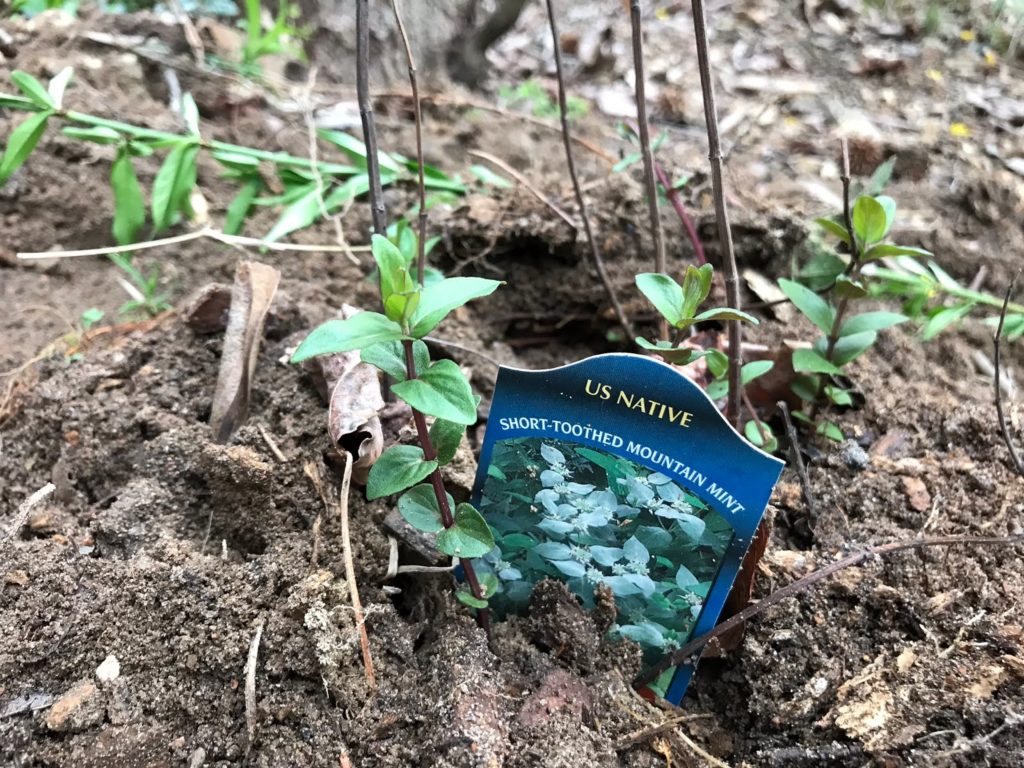
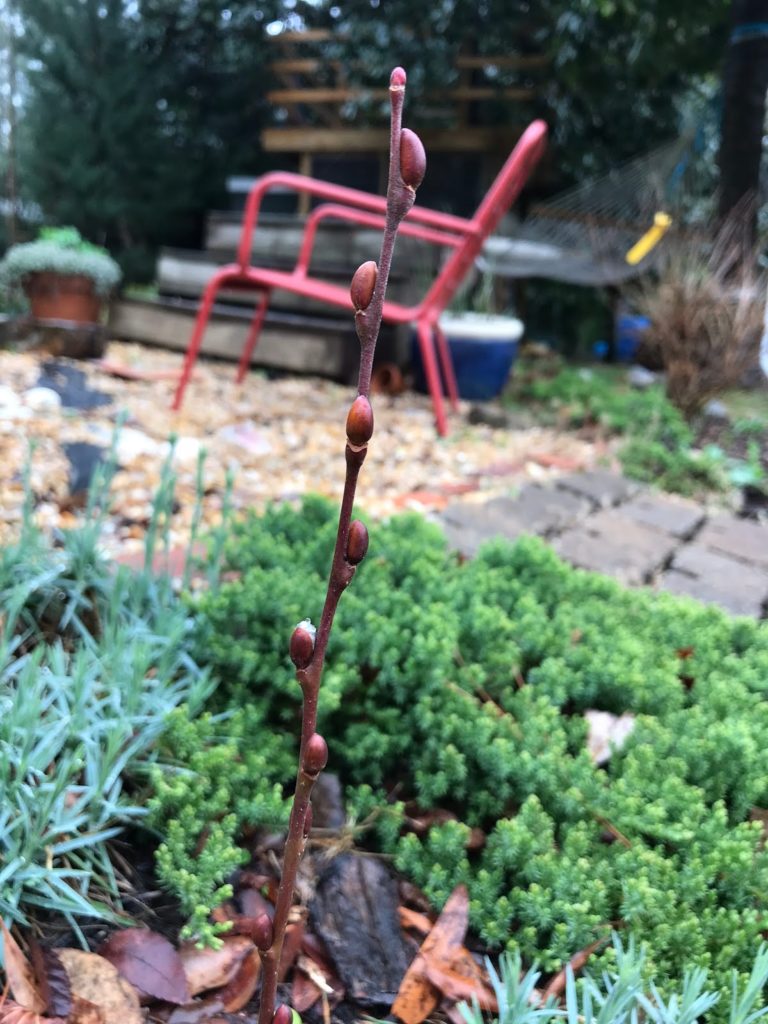 The patient way to get perennials
The patient way to get perennials
If you have a green thumb and time on your hands, you can start perennials from seed or cuttings. I’ve used Renee’s Garden Seeds to start several beds of self-sewing flowers. Biennials are best planted in two consecutive years so that there are blooms every year. I have a 4′ wide rosemary bush that I started from a 3″ clipping of another bush. It took several years to get to its current size (and several encounters with Joe’s weed whacker), but it’s finally thriving. I also have some mystery shrubs I started from clippings from my parent’s mountain house. I took a sharp pair of scissors took off three 5″ cuttings and wrapped the clipped ends in a wet paper towel until I could get home and dip them in rooting powder and in potting soil. Once roots were growing strong, I transplanting them into the yard. They are currently covered in buds!
Tasks for this week
Consider laying drip hoses, which save a lot of water as compared to a sprinkler. Drip hoses are not very expensive, but can break down over the years. Before installing it in the garden, check to make sure there are no clogs and that the water is fairly evenly distributed down the length of the hose. It is best to lay out the drip (or soaker) hoses, before you start putting out transplants. Believe me, you will only make the mistake of laying a drip hose AFTER you have planted your garden once.
What to plant now
The following seeds can be planted indoors this week: cantaloupe, cucumber, okra, pumpkin, and squash.
